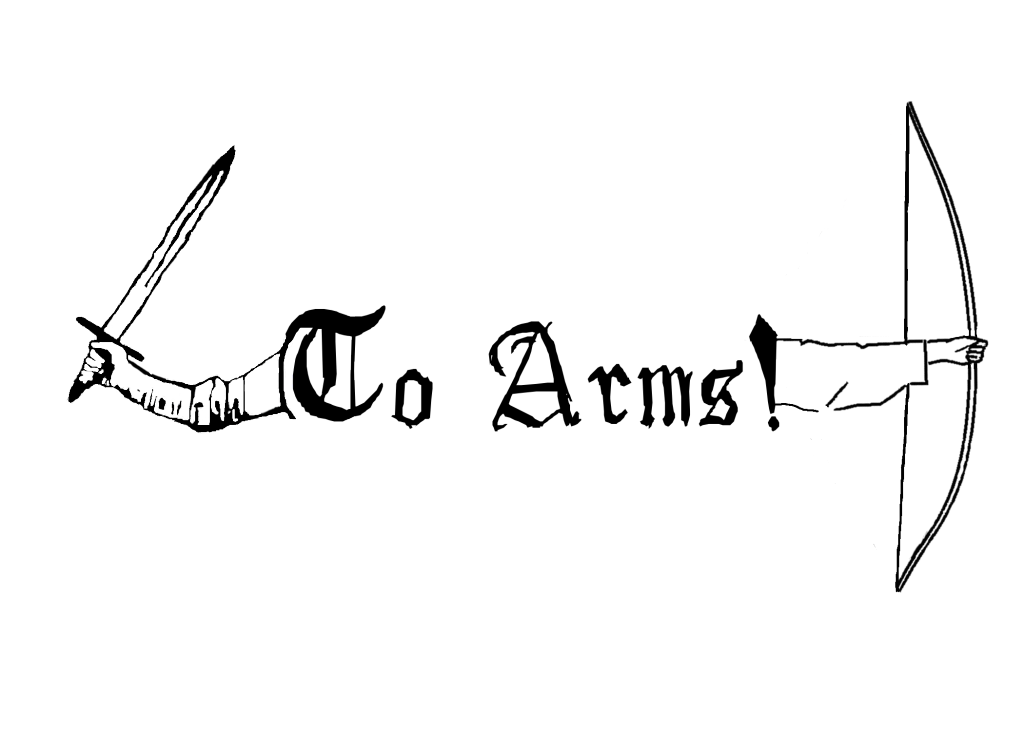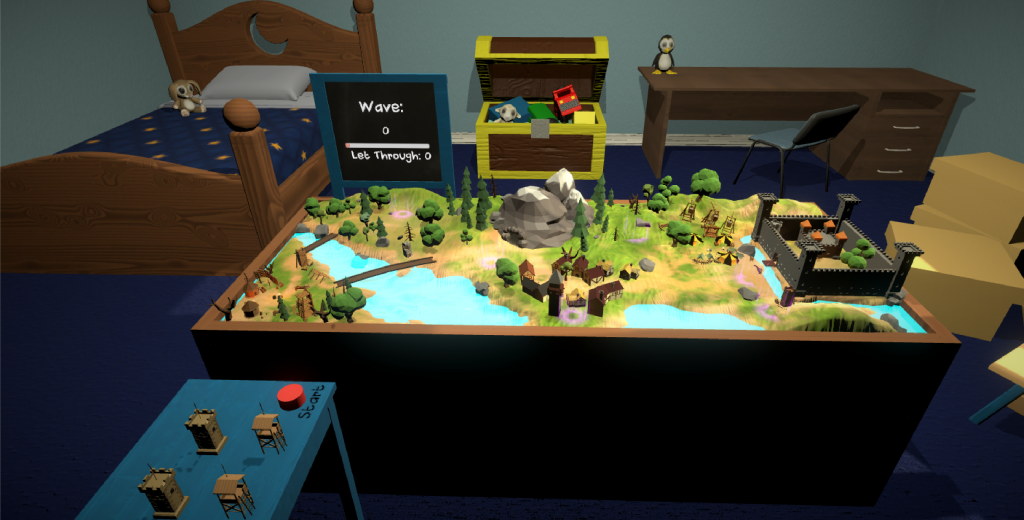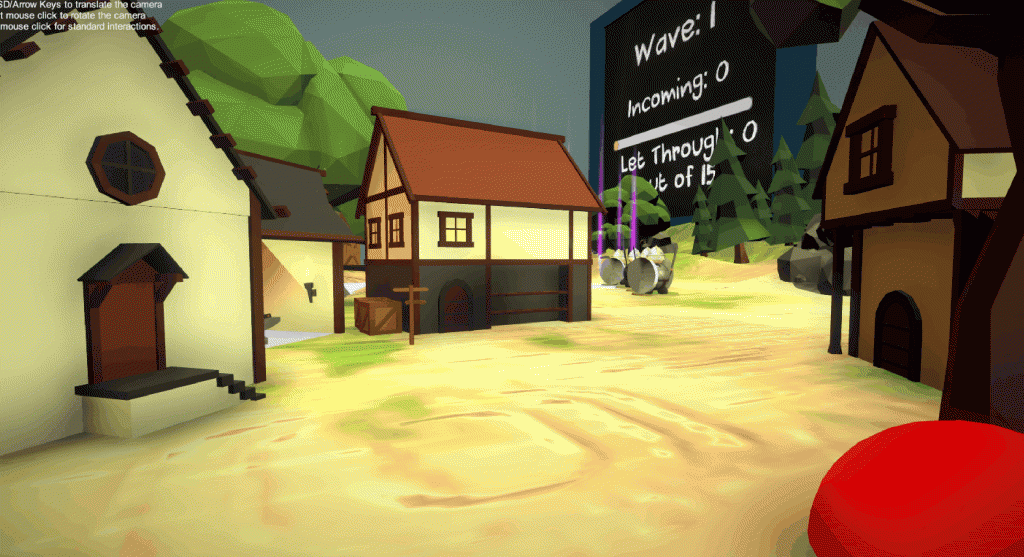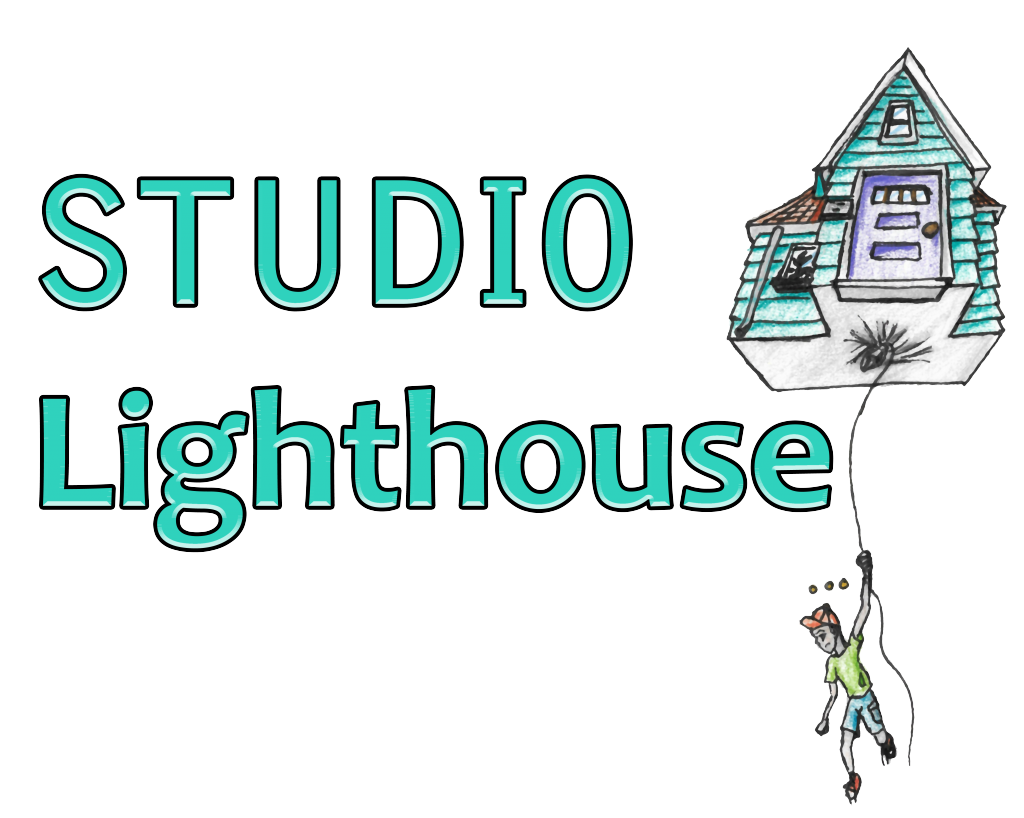Studio Lighthouse: Final Update

Postmortem and Reflections
In our final presentation, we presented a handful of lessons we had learned along with successes, challenges, and even some plans for the future. This post will recap some of them in greater detail.
Lessons
First, the lessons. Over the course of this project we framed the development process as an exploration of up and coming VR platforms. The HMD Odyssey was our platform of choice and working with the Windows Mixed Reality system was something new to many of us. Integrating with SteamVR was also something we had to figure out. Here we had more expertise, but every game is different and understanding what tools are useful is part of the challenge. Some things we began to learn about specifically for the game are catapult physics. We calculated how two points across a distance will be connected by an arc of a certain height. We also worked a lot on how to make the arrows launched by the player stick realistically into the environment. We started the process by understanding how to get a collider to stop an object, but we had to figure out how not to lose the rotation, and how to constantly have the collider aware of an arrow. We then decided to expand this to the rest of the world. So buildings and the ground also recieved their own colliders to ensure that arrows stick in them.
Two more items of learning we encountered as a team were related to the environment and mechanics of our player’s navigation. The first is smooth transitions over scale. We have the player going from their normal height dow onto the game board at a height comparable to the toy soldiers they are fighting. If this is done poorly we could have a lot of individuals getting sick and nauseous in the VR. We first tried to tackle this by using SteamVR’s teleportation system. However, this lead to more issues than it resolved. We eventually built our own diving system that scaled and transported you down to the correct size and place. The second piece was the idea of immersion. We were putting people into a small room to make them feel like a child. However, the brain is a funny thing and we had to take in people’s expectations of the real world to ensure that they would not be overwhelmed by the VR world. The lesson of immersion was not one we tackled until the last leg of the project.
Successes
In terms of successes, we had quite a few impressive ones. Our team dynamic was strong and we had really flexible and reliable scheduling. We had no permanent artist on our team so free assets became a blessing. We think we were pretty successful in creating all we needed using free assets that seemed to fit together in a congruent style. While Windows Mixed Reality and SteamVR are relatively new concepts for us they functioned well and we had few issues. Finally, our biggest success is our core mechanics. They were incredibly solid and polished and were the basis of our game concept. We spent the majority of our time ensure they were a success and that made our concept of diving into the towers and defending the castle more salient.

Challenges
Our challenges matched well with our successes. For the most part our aesthetic components became after thoughts. We focused so much on making the game work well and fluidly that we paid little heed to creating a unified art style. We also had a very bottom-up approach going from the minigames up to the metagame which meant we did not fully expand on our game design thoughts and ideas. We also attempted to modify SteamVR content rather than build our own system. We spent a long time trying to strong arm existing systems into our game instead of using existing systems to inform our development process. Immersion and art were left to the end as well making that a challenge for us to completed during our final push.
Future Plans
Finally, to review some of the things we thought about but were not able to add yet. We wanted even more minigames. We had planned out a spear throwing game, multiple enemy variants, and of course the infamous HORSE pitch. In connection with our biggest challenge we had plans for a more advanced wave system. It would include multiple paths, a difficulty progression, and some enemy variants. We also wanted to have a nice UI. We moved from having floating text to having it on a chalkboard by the game board, but we believe we could polish it up some more. This would also tie into us having a distinct menu and even a clearer endgame state.
We also had the big idea of having partial goals. We have on our map a cave, a small town, and then the battlefield in front of the castle, and then the castle itself. We considered using these to a greater extent by having players defend or fight off enemies at each stage and expand outwards or fall back towards the castle. This was ultimately scrapped due to the time it would take to develop it all. However, we have considered continuing this as a side project. The final thing we also considered adding was a tutorial mode. We currently just have some instructions available in game for players to read, but it does not always appear obvious.

Conclusion
In conclusion, this was a massive success for a class project. As this final report shows our team learned a lot throughout the project. Our challenges spurred us on and using the things we learned we were able to have a handful of successes under our belt by the end of the semester. We also not only learned things within the context of the project and the course, but we have clear thoughts and plans on how something could be expanded or improved. The learning supports our future attempts at game design and the feedback and experiences from the course will continue to bolster our future games.
